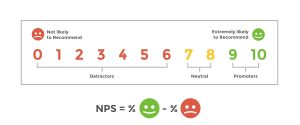Social media has its share of critics, who claim it ruins personal relationships by eroding social skills and setting unrealistic expectations. But according to techno-sociologist Zeynep Tufekci, social media can actually strengthen relationships by allowing people to communicate in new ways.
These benefits spill over into business. Through the power of social media, I’m able to see how my customers and managers are enjoying their lives. I can see where they’re vacationing and eating dinner. In-depth coverage of major life milestones is only a few clicks away. But Facebook posts alone don’t improve relationships — it’s the personal follow-ups with contacts that prove social media’s worth.
Years ago, one of my employees posted on social media that one of his close family members was dealing with major health issues. I reached out to him and told him that he was in my thoughts, not expecting anything from the conversation. That small gesture improved our relationship and fostered a strong bond that persists to this day. He later told me he was at a low point when I reached out, sharing that our conversation truly helped him get through a difficult time.
Social media has revolutionized the way companies interact with their customers, making it easier to connect and form relationships. But that doesn’t mean we should let social media replace personal relationships. Instead, it should be used to enhance existing relationships.
When Social Doesn’t Cut It
Social media has been a game-changer in sales, with 79 percent of financial advisors stating that they’ve acquired new sales through social media.
That’s great, but it takes more than a simple like to earn new clients (or maintain existing ones). Social media can feel a bit impersonal in some settings. It could feel awkward to invite someone to grab dinner if your only interactions up to that point have been retweeting each other. You need to take things a step further by adding a human element to online exchanges.
Instead of simply clicking “like” on someone’s Facebook post and calling it a day, mention how much you enjoyed their story the next time you see them in the hallway, for instance. This seemingly minor exchange will help cultivate that relationship and add a human touch to the online interaction.
Communicating solely through emojis and GIFs might be fun, but it also makes it difficult to get an accurate read on people. That clip of a dog playing piano might be mesmerizing, but it doesn’t deliver much in the way of personal interaction. Social media has caused attention spans to shrivel, making it nearly impossible for some people to have meaningful face-to-face conversations.
Unfortunately for anyone tethered to an Instagram account, personal interactions are necessary to get an edge in the corporate realm. Think like an old-school politician: You should be out there shaking hands and kissing babies (or at least forming connections through in-person interactions). Be personal and deliberate in your conversations, and be available to people — you never know when you’ll need to close a deal with a pen on a beer napkin.
Social media isn’t useless, but you need to be smart about how you use it. Real-life relationships remain key to closing sales and keeping clients happy. It’s important to be able to adapt and integrate a combination of the two approaches.
How to Evolve Time-Tested Tactics for the Age of Social
Adaptation is a key component of the sales world. To make traditional tactics work in the age of social media, you’ll need to adjust your approach.
For instance, I own a construction company that earns most of its revenue from residential construction. When the recession hit, people started to spend their money on “staycations” rather than traditional vacations. This meant families were adding pools and paying for other home improvements, which made them part of our target audience. We had to figure out how to reach this audience in the age of social media, which was no short order. Here’s how we responded:
- Be personal. To find our audience, we targeted specific neighborhoods by personally visiting with homeowners associations in those areas. The personal interactions helped us build relationships with neighborhood leaders and get our company name out there for when they needed a construction company.To replicate this approach with your business, figure out a how you can meet your audience face-to-face. Are your potential customers outdoorsy, for example? Perhaps you could sponsor (or at least attend) a major event in a nature preserve. These personal interactions can help you form a connection and build rapport early on.
- Stay true to your roots. No matter how you get the word out about your product or service, make sure your message resonates with the roots of your company and its values.When we were passing out flyers in our targeted neighborhoods, we focused on our company’s core values of building trust and promoting value. Consider the foundation of your brand, and stick to it in everything you do. If you don’t already have set values, spend some time with your leadership team to establish your identity.
- Use relationships to open doors. After we built relationships with homeowners association leaders, they gave us permission to join their closed Facebook groups. This access allowed us to begin interacting directly with our target audience.The added visibility and engagement on the HOA Facebook groups helped us generate more leads and sales because repetition is key to creating a connection with consumers. Social media can help you with that, as one study found 53 percent of Americans who follow brands on social media are more loyal to those brands.
- See challenges as opportunities. The media industry has undergone dramatic changes over the years, and it can be challenging to keep up with the times. My company’s founder, Zig Ziglar, used to communicate through cassette tapes and town halls. The digital age has transformed how we do business, as we can now we use social platforms to connect with more people and transform their lives. A traditional sales model still forms my company’s foundation, but we have had to evolve with the time.Change can be a good thing, and new challenges can create new opportunities. This is especially true in the case of social media — nearly 75 percent of companies that sell over social media reported a sales increase in 2015.
Social media has brought unique challenges to the business world, but it has also created new opportunities that weren’t possible before. While online interactions can help spark conversations and foster new relationships, it’s important to remember that human connections truly make sales.
Digital & Social Articles on Business 2 Community(50)
Report Post






